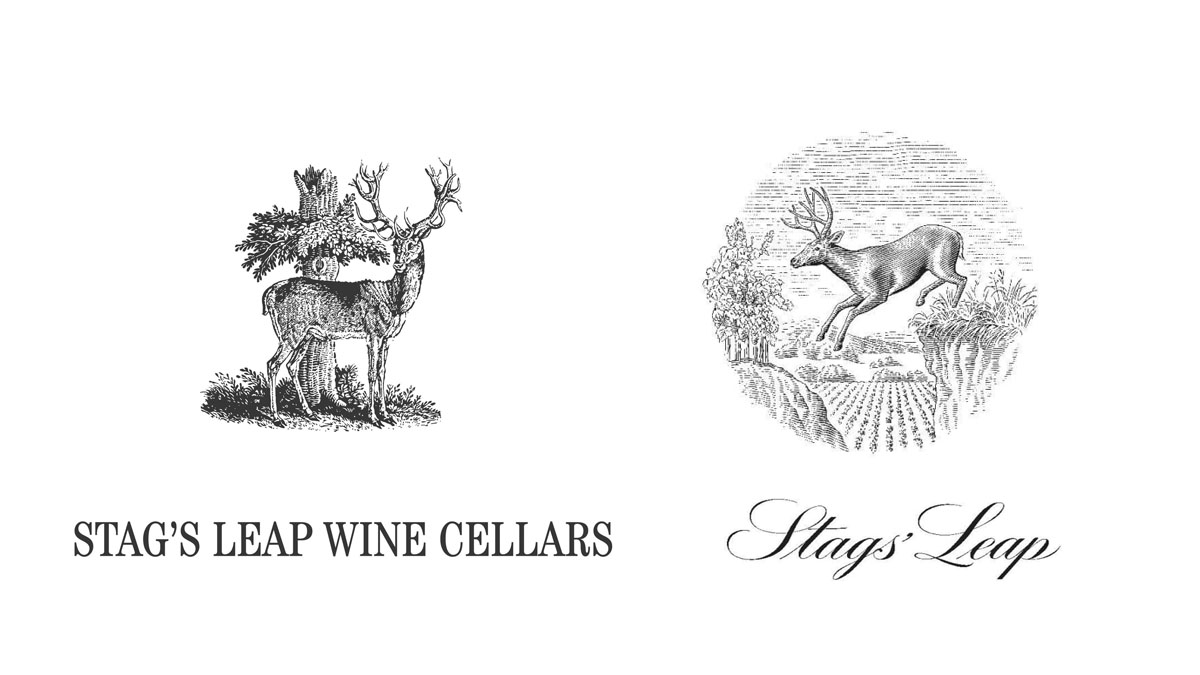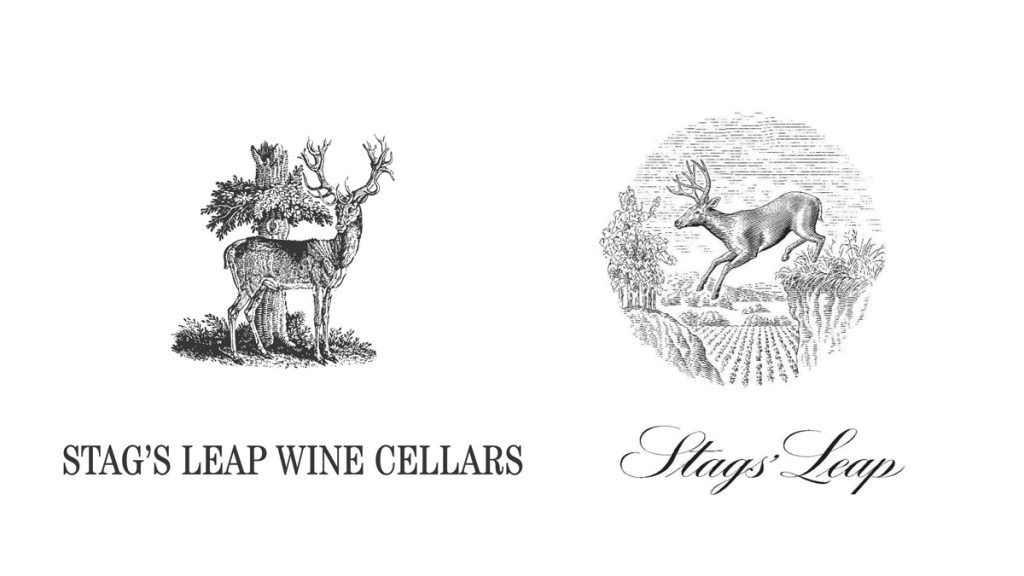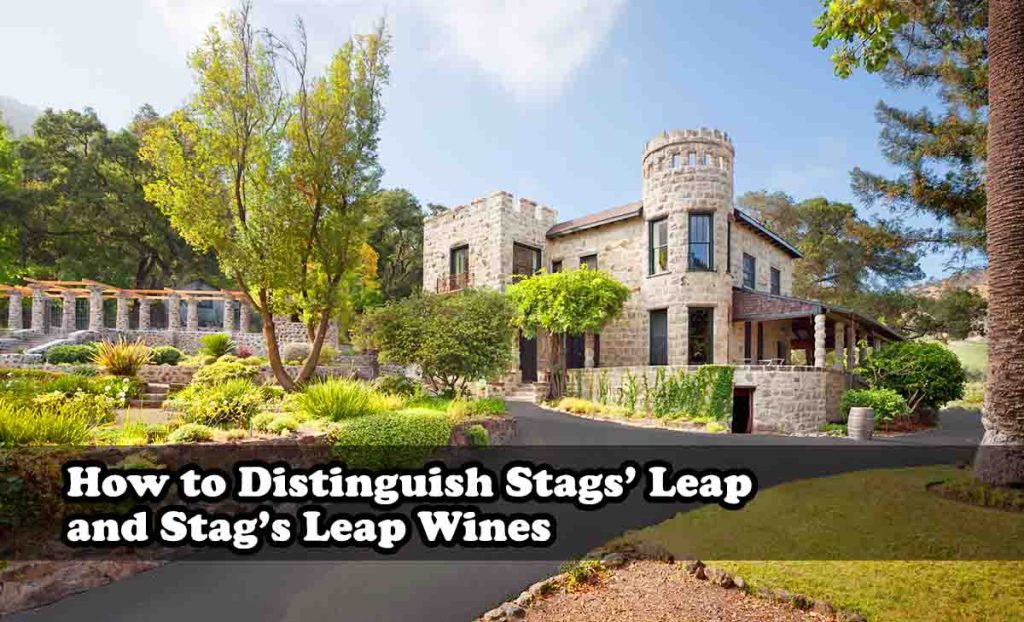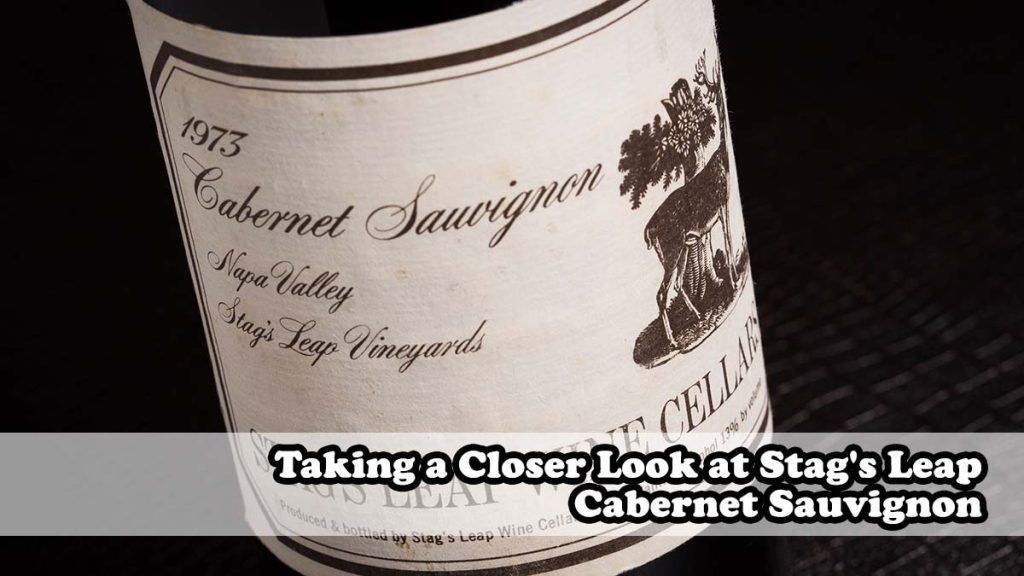Stags’ Leap vs Stag’s Leap
If you’re a wine aficionado, chances are you’ve heard of two amazing Napa Valley wineries: Stags Leap and Stag’s Leap. Both offer incredible wines with unique flavor profiles that rival each other in quality.
Stags’ Leap and Stag’s Leap are two common terms used in the world of wine, but they often get confused with one another. Stags’ Leap is a winery based in Napa Valley, California while Stag’s Leap is an appellation located within Napa Valley that produces some of the most sought-after wines in the world. But do you know the difference between them?
In this blog post, we’ll explore the subtle yet distinct differences between these two fantastic wineries, from their renowned storylines to their terroirs and award-winning portfolio of wines – ultimately helping you determine which is the right choice for your next wine-tasting experience.
By the end of the post, you should have a better understanding of Stags’ Leap and Stag’s Leap, their differences and similarities, and why Stag’s Leap wines are so highly sought after. So open those bottles, pour yourself a glass of something delicious, and let’s get started!
A Guide to Stags’ Leap Winery and Vineyards
Located in the heart of Napa Valley, California, Stags’ Leap Winery and Vineyards is one of the oldest wineries in the region. Founded by Horace Chase in 1893, it has become known as a pioneer in winemaking techniques and producing some of the best wines in the region. Here’s what you need to know about Stags’ Leap Winery and Vineyards.
The History of Stags’ Leap Winery and Vineyards
Stags’ Leap Winery was founded by Horace Chase, an Englishman who moved to California from Maine in 1883. He purchased a piece of land near the Napa River, which he named “Stag’s Leap Ranch.” From there, he began planting vines for his first vintage of wine—a Zinfandel—in 1893. Since then, Stags’ Leap has grown into one of the most respected wineries in Napa Valley.
The Wines at Stags’ Leap
Stags’ Leap produces a wide range of wines, from light whites to hearty reds. The most popular wines include their Cabernet Sauvignon and Chardonnay varietals. In addition to these two signature offerings, they also produce Pinot Noir, Merlot, Syrah, Sauvignon Blanc, Petite Sirah, and Malbec. All are crafted using traditional winemaking techniques that focus on creating balanced flavors with complexity and structure.
The Experience at Stags’ Leap Winery
Visiting Stags’ Leap is an experience like no other. You can take part in private tastings or join one of their structured tastings that offer a more educational approach to wine tasting. Or if you’re feeling adventurous you can book a tour that includes exploring their vineyard grounds on foot with a knowledgeable guide who will provide insight into their unique terroir and history as well as teach you about proper food pairings for each wine selection served during your visit. Additionally, there are special events held throughout the year such as barrel tastings or exclusive dinners hosted by acclaimed chefs from around the world showcasing seasonal local ingredients cooked alongside select wines from their portfolio.
From its founding more than 120 years ago to its modern-day standing as one of California’s most beloved wineries, Stags’ Leap is an iconic destination for oenophiles around the world. With its winding vineyard paths and breathtaking views overlooking Napa Valley below it’s no wonder why so many people flock here annually to sip on some of their award-winning wines while taking part in all sorts of activities offered throughout each season at this historic spot nestled within nature’s embrace just outside downtown Napa Valley making it truly an unforgettable experience!
The History and Legacy of Stag’s Leap Wine Cellars
Founded in 1970, Stag’s Leap Wine Cellars is an iconic winery located in Napa Valley. With a rich history and award-winning wines, this family-owned winery has become a beloved favorite among oenophiles around the world. Let’s take a closer look at what makes this winery so special.
The History of Stag’s Leap Wine Cellars
Stag’s Leap Wine Cellars was founded by Warren Winiarski, who purchased the vineyard land in 1970 and planted his first grapes there soon after. In 1976, his Cabernet Sauvignon won first place at an international wine-tasting competition in Paris known as the “Judgment of Paris”—one of the most famous wine tastings ever held. This unexpected victory put California wines on the map and established Stag’s Leap Wine Cellars as a leader within the industry.
Today, Stag’s Leap Wine Cellar is owned by Ste Michelle Estates and managed by Chief Winemaker Marcus Notaro and Viticulturist Dave Guffy. Together they are dedicated to creating stunningly complex yet approachable wines that embody both the terroir of their estate vineyards as well as their commitment to craftsmanship.
Wines Produced By Stag’s Leap Wine Cellars
At Stag’s Leap Wine Cellars, they produce five different types of wine; Cabernet Sauvignon, Merlot, Syrah, Chardonnay, and Sauvignon Blanc. Their red wines are lush with dark fruit notes including blackberry and plum alongside savory spices like clove and cedarwood. Their whites have bright acidity balanced with flavors of citrus fruit like grapefruit and lemon zest alongside hints of tropical fruits like pineapple and kiwi. All five varietals are made with great attention to detail from hand-harvested grapes grown on-site in their estate vineyards located within the famed Appellation region.
Stag’s Leap Wine Cellars has earned its place among Napa Valley’s most renowned wineries thanks to its long-standing commitment to excellence in winemaking combined with its dedication to producing high-quality estate-grown wines that reflect its unique terroir. Finally, in general, Stags’ Leap is often referred to as a winery and Stag’s Leap is referred to as a wine cellar.
How to Distinguish Stags’ Leap and Stag’s Leap Wines
Wines produced by the Napa Valley wineries of Stags’ Leap Winery and Stag’s Leap Wine Cellars are often confused with each other. While they both produce premium-quality wines, their production methods, the aging process, and terroir vary significantly. Let’s take a look at the differences between these two great wineries.
Production Methods
The production methods used by Stags’ Leap and Stag’s Leap differ in several ways. The most notable is that Stags’ Leap utilizes traditional winemaking techniques such as handpicking grapes, crushing them in small batches, and then fermenting the juice in stainless steel tanks before aging it in French oak casks for up to 18 months.
On the other hand, Stag’s Leap uses modern techniques such as the mechanical harvesting of grapes and cold-soaking them before fermentation to enhance flavor complexity. This method also includes a brief storage period on oak chips before bottling them for further flavor enhancement.
Aging Process
The aging process also differs between these two wineries. The wines from Stags’ Leap are aged for 12-18 months in a French oak cask while those from Stag’s leap are aged on oak chips for six weeks before bottling. As a result, the former has more complex flavors while the latter is released earlier with less complexity but greater drinkability.
Terroir
Finally, there is a difference between the terroirs of these two wineries. The soils at Stags’ Leap are predominantly limestone with clay and silt deposits while those at Stag’s leap contain more gravel than limestone or clay deposits. These differences give rise to unique expressions of fruit character for each wine produced by either winery, creating distinctively different flavors that can be discerned by an experienced taster.
When it comes to selecting your favorite wine from either the Napa Valley wineries of Stags’ Leap Winery or Stag’s Leap Wine Cellars, you should have a good understanding of how their production methods, aging processes, and terroirs all contribute to creating unique expressions of fruit character for each wine produced by either winery. Knowing this information will help you make an informed decision when selecting your favorite bottle so that you can enjoy your ultimate wine-tasting experience!
Tasting Notes for Each Wine
Stag’s Leap Cabernet Sauvignon is an award-winning vintage that stands out for its bold flavors and complex character profile. From its intense berry notes to its smooth finish—this cab has something special to offer any palate looking for a memorable experience. Whether you enjoy it on its own or paired with food—it’s sure to be an enjoyable experience!
Stags’ Leap Cabernet Sauvignon is a bold and complex wine with intense, ripe berry and cherry aromas on the nose. On the palate, the wine delivers a full-bodied texture and an array of flavors such as dark chocolate, espresso, tobacco, cassis, blackberry, and plum. Stags’ Leap wines are aged for 12-18 months in oak casks allowing them to develop layers of complexity in flavor. The lasting finish is smooth and inviting with notes of cocoa powder.
Stag’s Leap Cabernet Sauvignon is also a bold wine but generally tends to be more approachable than Stags’ Leap due to its shorter aging process. The nose offers aromas of ripe currant, plum, and sweet oak while flavors on the palate include tobacco, dark chocolate, and espresso bean. Stag’s Leap wines are aged on oak chips for six weeks before bottling which results in less complexity but greater drinkability when compared to Stags’ Leap Cabernet Sauvignon.
When it comes to Stags’ Leap vs Stag’s Leap Cabernet Sauvignon, both wines offer unique tastes and complexities. Stags’ Leap offers more intense flavors with a longer aging process while Stag’s Leap provides drinkers with an approachable wine that is easy to drink without the complexity of Stags’ Leap. Ultimately, the decision between these two wines will come down to personal preference and what you are looking for in a Cabernet Sauvignon experience. No matter which you choose, you are sure to enjoy an unforgettable wine-tasting experience!
Delicious Food Pairings for Stags’ Leap and Stag’s Leap Wines
This guide will provide readers with information on how to best pair their wines with food, making their next dinner party a hit.
Stags’ Leap Winery and Stag’s Leap Wine Cellar are located in Napa Valley and are known for their Cabernet Sauvignon and Chardonnay. Their wines are full-bodied, fruit-forward, and have complex flavors that make them perfect for pairing with a variety of foods. Here are some delicious ideas for food pairings that will bring out the best in your bottle of Stags’ Leap or Stag’s Leap wine.
For your Cabernet Sauvignon, consider pairing it with bold-flavored dishes such as beef tenderloin or grilled steak. The tannins found in the Cabernet Sauvignon will complement the richness of these dishes nicely. You can also try pairing this wine with charcuterie platters or aged cheeses such as blue cheese or Gouda.
Chardonnay is a great choice when serving lighter fare such as seafood, chicken, and vegetables. The notes of apple and pear in this wine make it an excellent accompaniment to roasted chicken or salmon served over a bed of sautéed vegetables. It also pairs well with creamy dishes such as risotto and pasta in cream sauce. For something sweet, try serving it alongside a light dessert like angel food cake that has been topped with fresh berries and a dollop of whipped cream.
No matter what type of meal you’re planning on serving at your next dinner party, there’s sure to be a perfect pairing from the portfolio offered by Stags’ Leap or Stag’s Leap wines! From bold reds to crisp whites—there’s something for everyone here! So don’t hesitate any longer—grab yourself a bottle and start experimenting! Your guests are sure to be impressed by your newfound knowledge of food pairings!
Taking a Closer Look at Stag’s Leap Cabernet Sauvignon
Stag’s Leap is a vineyard located in Napa Valley, California that produces award-winning Cabernet Sauvignon. This red wine has earned numerous accolades for its unique flavor and high quality. Let’s take a closer look at this award-winning vintage and why it stands out from the competition.
Tasting Notes and Characteristics
The Cabernet Sauvignon from Stag’s Leap is characterized by its intense blackberry, currant, and plum flavors mixed with hints of sweet oak, cocoa powder, and tobacco. On the palate, it offers well-integrated tannins that balance out the wine’s fruit-forward character. The finish is smooth and inviting with lingering notes of dark chocolate and espresso bean.
Awards and Accolades
Stag’s Leap has been producing world-class Cabernet Sauvignon since the early 1970s. Over the years, their wines have received numerous awards from various prestigious organizations such as Wine Spectator, Decanter World Wine Awards, San Francisco International Wine Competition, etc. In 1976, their 1973 Cabernet Sauvignon won first place in a blind tasting against some of France’s most famous vintages—a singular achievement that earned them much acclaim in the wine industry worldwide.
Food Pairings
This wine pairs well with red meats such as steak or lamb chops as well as richly flavored cheeses like blue cheese or gouda. It can also be enjoyed with roasted vegetables or creamy pasta dishes like spaghetti carbonara or lasagna. For dessert pairings, try pairing this wine with dark chocolate desserts like brownies or chocolate truffles.
Conclusion
Stags’ Leap and Stag’s Leap are two highly acclaimed vineyards located in Napa Valley, California. Stags’ Leap produces award-winning Cabernet Sauvignon that is characterized by its intense blackberry, currant, and plum flavors mixed with hints of sweet oak, cocoa powder, and tobacco. The wine has won numerous awards from various prestigious organizations due to the unique flavor profile it offers.
Furthermore, this red wine pairs well with a variety of dishes such as steak or lamb chops, roasted vegetables, creamy pasta dishes like spaghetti carbonara or lasagna as well as dark chocolate desserts like brownies or chocolate truffles. As you can see Stags’s leap wines offer something for everyone which makes them perfect pairing options no matter what type of food you serve at your next dinner party!
Thank you for joining us on this adventure into understanding more about these two vineyards—we hope now readers will strongly consider trying at least one of these quality wines for themselves!
FAQs
Which was first Stag’s Leap or Stags’ Leap?
The original Stags’ Leap Winery was founded in 1893 by Horace Chase and Hamilton Walker Crabb, making it the first winery to bear the Stags’ Leap name. However, a few years later in 1970, Warren Winiarski founded Stag’s Leap Wine Cellars with a different spelling of his winery’s name. This winery was made famous when, in the 1976 Paris Tasting, Winiarski’s 1973 Cabernet Sauvignon beat out some of the most expensive French wines and became an iconic Napa Valley wine. Since then, Stag’s Leap Wine Cellars has become a renowned name in fine wine production and is recognized as one of the top wineries in Napa Valley.
Both Stag’s Leap Wine Cellars and Stags’ Leap Winery produce some of the finest wines in California, each with its own distinctive styles and flavor profiles. While both wineries are known for producing excellent cabernet sauvignon and red blends, they also craft a range of other wines including chardonnay, merlot, syrah, zinfandel, and more. No matter which winery you choose to sample from, you’ll be sure to find an exceptional wine that will make your tasting experience truly unforgettable.
Why is it called Stags Leap?
Legend has it, a wily stag leaped across the river to escape hunters. The local Native Americans noticed this leap of faith and named it Stags Leap in honor of the brave animal.
This region is now home to some of the most sought-after wines in California, including Cabernet Sauvignon and Merlot varieties. The unique soil composition creates a rich terroir that produces full-bodied reds with intense flavors and aromas. Stags Leap wines are often described as having dark fruit flavors such as blackberry, plum, tobacco, and licorice. They also have a strong tannin structure for aging potential.
In 1976, Stags Leap District was officially recognized as an American Viticultural Area (AVA). Since then, the district has become a world-renowned wine region and is home to many acclaimed wineries. Winemakers here strive to bring out the unique character of Stags Leap wines in each bottle they produce.
From its humble beginnings as an escape route for a brave deer, Stags Leap has grown into one of California’s most beloved and respected wine regions. Its remarkable wines are sure to delight any enthusiast looking for an unforgettable experience.
There you have it — the story behind Stags Leap District, its incredible wines, and why it is one of California’s most beloved wine regions. So go ahead and try a bottle or two from this amazing area!
Which Stags Leap won in Paris?
In 1976, a bottle of 1973 Stags Leap Cabernet Sauvignon from Stags Leap Wine Cellars won the historic Judgment of Paris blind tasting event in France. The wine was judged against several French wines and was declared the winner in both the red and white categories. This notable feat earned Stags Leap Wine Cellars worldwide recognition and established California as a leader in winemaking excellence. Today, Stags Leap cabernet sauvignon continues to receive acclaim for its rich flavors and complexity—making it one of Napa Valley’s most sought-after wines.
Where is Stags Leap made?
Stags Leap is a wine-producing region in Napa Valley, California. The Stags Leap District was the first viticultural area to be officially defined and recognized by the United States Department of Treasury’s Bureau of Alcohol, Tobacco, and Firearms (ATF). The district encompasses approximately 3,300 acres within the larger Napa Valley AVA and produces some of the most highly regarded Cabernet Sauvignon wines in the world. The soils in this region are a mix of clay, gravel, sandstone, and volcanic rock which contribute to intense flavors.
With its Mediterranean climate and excellent drainage, combined with careful vineyard management practices by growers, Stags Leap has created an atmosphere for premium quality grapes that produce intensely flavorful wines with great aging potential. The Stags Leap appellation encompasses four distinct sub-appellations: Stags Leap District, Palisades, Los Carneros and Coombsville. Each of these areas has its unique microclimate and soil composition that contribute to the varied terroir found in the region’s wines.
Visit our Website for more interesting posts.

I am Thomas Delange, CEO of McMahon’s Public House bar. I have a passion for restaurants and cooking & wines, and I love to spend my free time experimenting in the kitchen. I’ve worked hard to make McMahon’s one of the most successful bars in the city. When I’m not working, I enjoy spending time with my friends and family.




